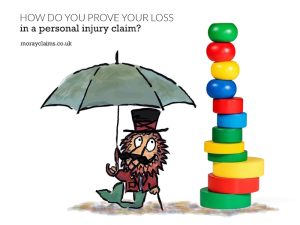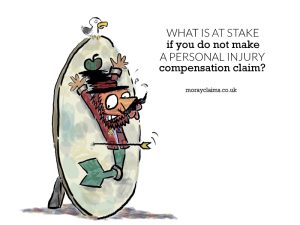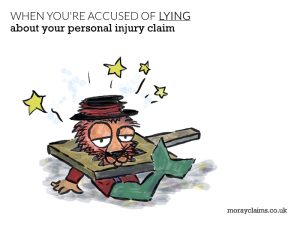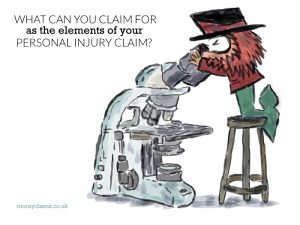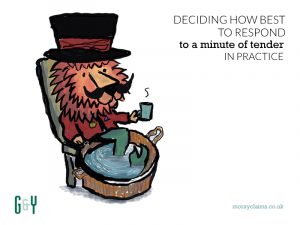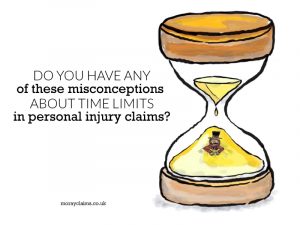Rugby League and Rugby Union have common origins. There are many similarities between the two codes. Both kinds of rugby use an oval ball and play on a rectangular pitch with H-shaped goals. Each plays two halves of 40 minutes. Passes must always go backwards. Tackling is a crucial element in each. But there are significant differences as well. There are 15 players in a Rugby Union team and 13 players in a Rugby League team. There are no lineouts in Rugby League. If a ruck or maul develops in Rugby Union there is a material chance that possession will change hands whereas in Rugby League possession is generally retained by the team which previously had possession – up to the point of the ‘sixth tackle’ when possession will automatically change hands according to the rules of Rugby League. There are some who say that Rugby Union is played at a slower pace - with more stoppages - whereas Rugby League maintains a generally higher pace of play, with higher ball-in-play Continue Reading
Articles from our blog on the Claims Process
Below are articles from our blog which relate to the topic of the Claims Process.
Please also see our main page on the Claims Process
When an insurer denies liability without showing reasonable justification
Sometimes an insurer or loss adjuster's behaviour is so unacceptable – and they will not apparently listen to any reasoning – that the only way you can have a chance of getting their attention is to call them out publicly for their behaviour. This article is about a situation we have encountered with insurers and loss adjusters where they will not give us sufficient information in relation to a claim – in which they are denying liability - to enable us to advise our client whether or not the denial of liability is reasonable. We investigate many potential claims where the evidence the opponent produces shows that the claim's chances of success are poor. It is to be expected that not all personal injury compensation claims can be successful. No solicitor will mind that, provided the opponent provides the solicitor with sufficient evidence for the solicitor to be able to understand the denial of liability and explain it to you, as the injured client. In cases which involve Continue Reading
Complementary therapies in personal injury compensation claims
In 2007, I was diagnosed with Lyme Disease, a bacteriological infection you get from deer ticks. Some of the main symptoms were tiredness , lethargy and “brain fog”. I was treated with antibiotics over a period of about 9 months, some oral, some intravenous. I recovered but had some annoying residual symptoms, including neck stiffness and pain. I tried a treatment from complementary medicine, called craniosacral therapy, through Healthworks in Forres, and got a lot of benefit from it. I consider my recovery was due to a combination of conventional and complementary medicine. I am a believer in the benefits of complementary therapies. But I relied primarily on conventional medicine and at all times after I had been diagnosed by my GP and referred for expert opinion, I was under the care of a consultant in the Infectious Diseases department of Aberdeen Royal Infirmary. Complementary therapies have a lot of advantages but in the context of a personal injury claim Continue Reading
How do you prove your loss in a personal injury claim?
What are the things you must do to prove your loss - and to minimise your loss - in a Personal Injury Compensation Claim? How easy is it to value a personal injury compensation claim? In theory, working out the value of your personal injury claim should be straightforward. What your solicitor needs to do is make a comparison between two possible factual scenarios: Both of these key elements are estimates or projections, to some extent. Both will carry uncertainties, to a greater or lesser extent. There are two important things to bear in mind when comparing "your life as it is in fact" (with the accident) with "your life as is should have been" (without the accident). Let's look at each of these in turn. 1. Did the accident cause the loss you are trying to claim. In some instances, this will be “obvious”. For example, if your accident did not cause any injury to your wrist, a claim for physiotherapy costs incurred in relation to the wrist will fail Continue Reading
Services Claims: Help From Your Family After An Accident
(NOTE: This is an updated version of a post originally published on this website on 24 October 2013). If you have been injured in an accident, it may well have put you out of action for a while with the result that you needed help from members of your family. The law in Scotland allows relatives to claim compensation for the time they give up to help you. This might seem strange: you would hope and expect they would do that anyway, without requiring any financial reward. On the other hand, if they were not there to help you, it would make life awkward, at best, and unmanageable, at worst, unless you could get help from some other source. So it makes sense that compensation should be available for them for the time involved in providing you with assistance. Their claim does not stand on its own; it can only be made as part of a personal injury claim by you, the injured person. Two Types of Services Claim There is the possibility to make a claim for two different types of services under Continue Reading
What is at stake if you do not make a personal injury compensation claim?
What do you stand to lose if you do not make a claim for personal injury compensation in a situation where that would be a realistic option for you? In this article, we will consider 3 ways you can lose out if you don't make a personal injury claim. The general principles here may be obvious but probably not all of the details will be known to you already. Knowing these things is an important part of your "informed consent" - i.e. having all the relevant points to hand before making your decision: to claim or not to claim. Firstly, we will look at your “loss” due to your failure to give yourself the benefit of monetary compensation. In fact, that loss does not just apply to you; it can apply to others who would have to rely on you making a claim in order for them to be compensated as well. Secondly, we will discuss the fact that you only have the choice to make a personal injury compensation claim for a limited period of time. The right does not last forever. Once the right Continue Reading
When you are accused of lying about your personal injury claim
Traditionally, age brings with it wisdom – and the respect of others. But what if you’re 84 years old and you’re accused of telling lies "in court"? It's one thing to exaggerate, for example, medical symptoms caused by an accident - but to invent them? Here's an anonymised true story of a case we dealt with and how a scenario of that nature played out in practice. Our client was injured after she fell into an excavation that had been made by a national utilities company. It was right outside her garden gate. There were no warning signs in place. Our client had a registered sight impairment. She opened her gate, minding her own business, took one step and suddenly down she went. After her accident, the utilities company covered the trench with hard plastic matting so it was impossible for pedestrians to fall in. If they had done that before the accident, it could not have happened. We alleged that the utilities company had been negligent and that had caused our Continue Reading
How the Cost of Living Crisis affects the Value of Your Personal Injury Claim
In July 1971, a sliced white loaf of bread would have cost you 10 pence. In July 2021 the cost would have been £1.06. The Retail Price Index ("RPI") shows an average cost for the same loaf of bread as £1.36 in July 2023. The rise in prices over time is known as inflation. It can also be described as the decline of purchasing power over time. In the present Cost of Living Crisis, the upward trend in prices is affecting most things and that includes personal injury compensation (compensation also sometimes referred to as “damages”). The injury part - for the "pain and suffering" associated with the injuries - of a personal injury compensation claim is just one element of the value of the claim as a whole. Other elements can include wage loss and necessary travel expenses. In this article, we are only discussing the injury part of personal injury claims. This can be variously described as "pain and suffering", General Damages and solatium. Continue Reading
How pain and suffering valuation guidelines underpin personal injury claims
What do you do if you’re sailing and your mast breaks? In the 2013 Atlantic Rally for Cruisers, in which small sailing vessels travel from Gran Canaria to the Carribbean, that happened to one of the participating boats. Pollux, from France, with her 2-man crew was only 140 miles from her final destination of St. Lucia, when she was dismasted in a heavy squall. The crew did not panic. Applying the concept of ‘jury-rigging’ – a term used to describe the actions of makeshift running repairs made with only the tools and materials on board – they rigged a windsurfing sail as a temporary replacement on their remaining “half mast”. It helped that the final stretch was downwind and, in the end, they lost remarkably little time because of the mishap. A few adaptations and they still achieved the desired result – getting “home”. But without the enforced adaptations they would not have made it to their destination. In valuing personal injury claims in Scotland, it can sometimes Continue Reading
What all can you claim for with a personal injury claim?
The style of lettering you use for words can have life and death consequences. Research by the AgeLab at Massachussetts Institute of Technology (MIT) has noted how car dashboard interfaces, if designed correctly, should minimise the amount of time the driver has to spend looking at them. The longer you take to work out what's on the screen, the less time you're looking at the road. Some typefaces are rigid and uniform. Their letters and numbers can look highly similar to each other. But other typefaces have much more open spacing and varied letter shapes. These latter fonts can shave precious milliseconds off the time drivers spend looking away from the road. Getting this form of visual communication right is important because the consequences for vehicle travellers' safety could be serious. With personal injury claims, one thing you need to get right in order to avoid potentially serious consequences is the valuation of the claim. With personal injury claims, your Continue Reading
Deciding how best to respond to a Minute of Tender in practice
Tea drinking is a national pastime in Nepal. They have all sorts of teas - sweet, butter, hot, cold, black, white. The ritual with tea is that, when offered tea, you decline it and your host insists that you have some. No matter how much you say no, they still insist that you have it. So you drink it. In other words, it's a situation with drink consumption where "no" means "yes". With personal injury court actions, as the claimant, if your opponent offers you settlement via a Minute of Tender, you want to say "no" (because you always want them to make you a better offer). Unfortunately, you might find that however much you say "no", depending on the level of offer, your legal adviser may have to insist that you say "yes" and accept it. It's one of the situations that can happen with Minutes of Tender. You think your personal injury claim’s worth £20,000 but you’ve got a formal offer (Minute of Tender) in your court action to settle at £10,000. Should you accept the Continue Reading
Do you have any of these misconceptions about time limits in personal injury claims?
“The room is full of steam from the kettle but you still make the tea.” These were words of my school chemistry teacher. What was the point? That a small volume of water produces a large volume of steam. If you put water on to boil for a cup of tea but then get distracted by something else, you may return to find the room filled with steam but there will probably still be enough water left to make your brew. This idea that you can forget about something for a while, come back to it and the outcome will still be okay seems to be one that many folk with possible personal injury compensation claims have too. The problem is that personal injury claims are up against a hard deadline. In most cases, that deadline is 3 years from the date of the accident/injury. If you don’t settle your claim by negotiation within the 3-year period, you’ll have to raise a court action to keep the claim alive beyond the deadline - or lose the right to claim forever. It’s inevitable Continue Reading


